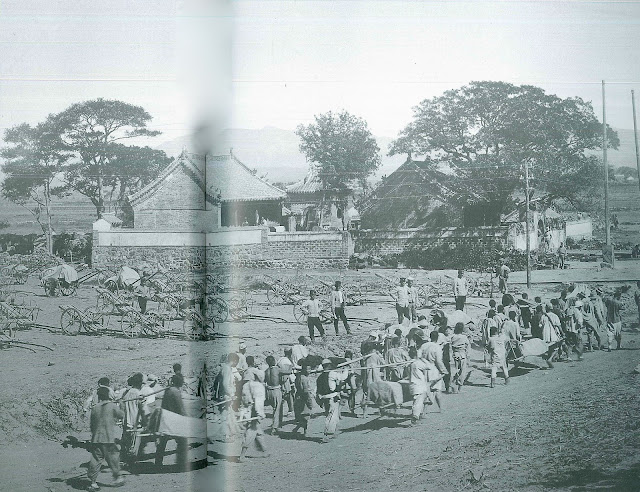In the Russo-Japanese War, at 2:27 p.m. on September 24, 1904, a column of Japanese naval heavy artillery escorted a large number of seriously wounded men lost during the Siege of Lushun at the northern end of Dochengzi Village outside the city of Lushun. The Japanese casualties during the siege of Lushun suggested the painful nature of casualties and the cruelty of war. The Japanese soldiers, always under the order to charge, charged into the Russian positions with bayonets raised as if they were fighting for skill. At that time, with the continuous sound of Russian machine guns, which Japanese soldiers were exposed to for the first time, Japanese soldiers were killed or wounded in battle one after another and collapsed in the wilderness, and corpses and seriously injured people were scattered around.
In the Japanese siege of Lushun against the Russians, from August 19 to August 24, 1904, the first general attack on Lushun was launched under the command of Kiseki Nogi, the commander of the Third Army; from October 26 to October 31, 1904, the second general attack on Lushun was launched; on November 26, 1904, the third general attack on Lushun was launched; and on November 26, 1904, the third general attack on Lushun was launched. On November 30, the Third Army temporarily occupied the Russian position of 23 Highland, and on December 1, Chief of Staff Kodama joined the Third Army headquarters. On December 5, the Third Army reoccupied 23 Highland. On December 5, the Third Army reoccupied Twenty-three Highlands, and after 155 days of heavy casualties, with a loss of about 65,000 Japanese dead and 30,000 Russian dead, captured Lushun, the largest Russian position in the Far East.
On February 10, 1904, Russia and Japan mutually declared war on each other, and the Russo-Japanese War broke out; from August 19, 1904, there were about 59,000 casualties in the siege of Lushun, and about 23,000 casualties in the Battle of Liaoyang, with enormous sacrifices; from March 1 to March 16, 1904, there were about 240,000 Japanese troops in the Battle of Mukden, In the Battle of Mukden from March 1 to March 16, 1904, about 240,000 Japanese troops narrowly won the Battle of Mukden against about 320,000 Russian troops. The Japanese lacked men, weapons, ammunition, and everything else, while the Russians came to a ceasefire due to the critical situation in the empire. With the mediation of the United States, the Russo-Japanese War ended with the peace treaty at Portsmouth on September 5, 1905. In the Russo-Japanese War, about 70,000 Japanese troops and 90,000 Russians were killed in action.

